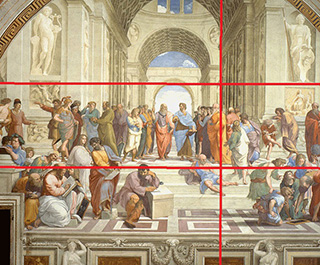
Raphael's painting The School of Athens, created between 1509 and 1511. Raphael made use of the concept of golden ratios, as evidenced by the red lines which define key elements of the composition. (Image courtesy of Gary B. Meisner, Copyright 2001–2016.)
Instructor(s)
Dr. Lee Perlman
MIT Course Number
ES.113
As Taught In
Spring 2016
Level
Undergraduate
Course Description
Course Features
Course Description
This course explores the relationship between ancient Greek philosophy and mathematics. We investigate how ideas of definition, reason, argument and proof, rationality / irrationality, number, quality and quantity, truth, and even the idea of an idea were shaped by the interplay of philosophic and mathematical inquiry. The course examines how discovery of the incommensurability of magnitudes challenged the Greek presumption that the cosmos is fully understandable. Students explore the influence of mathematics on ancient Greek ethical theories. We read such authors as: Euclid, Plato, Aristotle, Nicomachus, Theon of Smyrna, Bacon, Descartes, Dedekind, and Newton.
Other Versions
Other OCW Versions
Archived versions: ![]()


